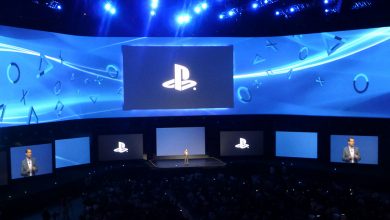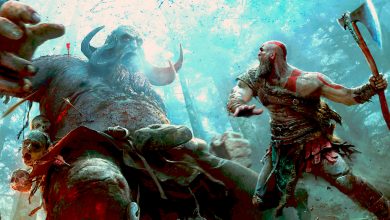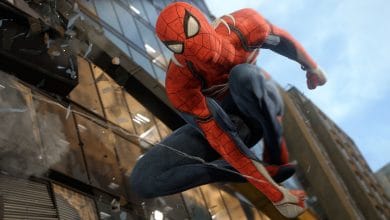2009 was a great year for the PlayStation 3 worldwide. But here in India, the success of the PS2 made the year twice as nice for Sony. So we felt it was just the right time to get in touch with Sony Computer Entertainment India country manager Atindriya Bose for some reflection on the year gone by and his thoughts on the year ahead. This is our fourth sit down with the PlayStation India boss (read the first three here, here, and here) and this one comes almost two years after the last one, so we have lots to catch up on. So let’s get straight to it.
[singlepic id=326 w=450 float=center]
Before I get into the various aspects of PlayStation, what do you think of specialist games retail with the likes of Milestone and E-Xpress coming in, and many of the established games retailers now expanding online?
I think there is definitely a role that specialist retailers can play. On one hand, you have the metros where you do have retail chains selling games, but the people there don’t know much about gaming, so games aren’t displayed ideally, or the sales people there aren’t really able to help a customer out. So when you have a specialist store like a Game4U, even without the sales staff, it is visually very helpful to the customer, because you have a large array of games on display, arranged by platform and genre to make things easier for the customer. The same applies to Games: The Shop and older stores like Origin Games, although on a smaller scale.
On the other hand, there is a massive untapped market in the smaller cities, where the only games available are at Planet M stores, and you never know what sort of selection they may have. There is potential there, but again, profitability may be an issue. Store space will be cheaper, but inventory management is a challenge. I think as important as specialist retail, is that chains like Croma and Ladmark get more involved in gaming and make their gaming sections more well-informed and consumer-friendly, because their stores are widespread and are already able to reach many more gamers. There can also be a third alternative, where for example, there could be a Game4U branded section occupying part of a Croma or landmark store, so you have the best of both worlds.
Online too we’ve been seeing a lot of people expanding their businesses, and in fact, a lot of the stores are taking cues from online retailers in terms of game preorders. We really believe that preorders are a great way to create buzz for a game, and it’s great to see the excitement around game preorders.
[singlepic id=1351 w=450 float=center]
Since we last spoke, Hanuman: Boy Warrior and Desi Adda have released. At that time, you had said that the PS2 had an install base of around 350,000. Have the release of these games had a significant impact on the hardware sales?
Currently, we’re estimating a PS2 install base of around 510,000. So it’s nice to go out and say that we have half a million PS2s in India. And even with 60-70 percent of these being modded, it still makes these games sustainable. Looking at this fiscal, we are looking at about 76% percent growth in hardware, so that’s encouraging. We’re estimating about 125,000 units this year, and now grey market PS2 sales are almost negligible. The way things are going, I think India can still grow bigger and bigger.
Unlike two years ago, the new PS2 adopters want something more they can relate to. So games like Hanuman and Desi Adda, which you could say aren’t “gamers’ games”, are seeing a fair response. And now these new PS2 owners want racing games, they want Ben 10. So we have two categories of new adopters; you have pre-teens, and in smaller cities you have college students and even young professionals who are just getting into gaming.
How has the software side of the PS2 performed here?
As far as the smaller cities go, software sales largely depend on the distributors and how their reach and distribution network is. Until now, Sony and EA were the only publishers who had PS2 games locally replicated. But it’s very heartening to see that now we have Sega, Disney, Ignition, and Codemasters replicating PS2 games locally. And we’re talks with more top publishers to begin local replication. Eidos/Square Enix is also seriously looking into this market. And it’s no longer just a promise of the potential that India holds, but the publishers are now seeing the market growing. Even on the pricing front, things are stabilising. We’re even seeing PS3 prices now stabilising at Rs 2,499, where earlier it would often be closer to or over Rs 3,000. We’re expecting the same with PS2 and PSP games, and a lot depends on our distribution, because we need to reach new markets. And while the Indian games that are out now may not appeal to the core gamers, we are able to engage the new gamer in the small cities more easily with them.
How did these two games – Hanuman and Desi Adda, sell?
In terms of standalone sales, Hanuman did around 8,000 units, which is pretty good, and I think it has around another 2,000 units in it. If I include bundles, then that number goes up to 90,000. For Desi Adda, standalone sales on PS2 in the last thee-four months have been around 4,000. But with the summer coming, I think it will end up at around 6,000. On the PSP, we’re estimating around 4,000 units by the end of summer. In terms of Desi Adda bundles, so far we’ve sold around 46,000 on PS2, and around 35,000 on PSP. So Desi Adda overall will do around 100,000, which is great.
[singlepic id=1859 w=450 float=center]
In terms of our strategy, sure, the standalone sales aren’t out of this world, but they aren’t bad at all. At 8,000 units, Hanuman sits just behind games like Need for Speed and God of War. So it’s encouraging. More importantly, when bundled, these games are selling PS2s faster in new markets. The sales are at least 20 percent higher with these bundles than any other bundle we’ve done.
So are these sales enough to encourage you to keep making more India-focussed PS2 games?
There are already three titles in the pipeline. One is based on street cricket, which is being done at Trine. We wanted to release that in time for the IPL, but it looks like it will be pushed back to the end of summer. It’s going to be very arcadey and unlike the cricket games we’re used to. The second game is a cart racing game by Gameshastra, which is currently being called Cart Kings. It’s a racing game, but with bullock carts in a rural setting. One thing we’re wary of and want to avoid is this game being stereotyped as “what Indians do”. We’re planning to release this just after Diwali. Towards the end of the year, we have a game from Immersive Games based on Chandragupta. This will be a story-driven action-adventure title. All three of these games will be on PS2 as well as PSP.
You may have also heard about Smash and Survive, the first India-developed PS3 game that is developed by Zen Technologies. They’re looking for publishers, and they’ve approached us as well as others. Eklavya from GameShastra is more a proposal that has come to us. There’s also a big move towards PSP minis and PSN titles, and Indian developers are doing well in those areas. So things are happening in Indian.
I have been specifically been told to ask you – will there be another SingStar Bollywood?
To be honest, not anytime soon. We didn’t get the sort of response we had expected from SingStar Bollywood. And with this being an internationally-controlled franchise, the process of going about making it happen is also a lot more tedious.
Next page: PSN India – The how, what, and when.



